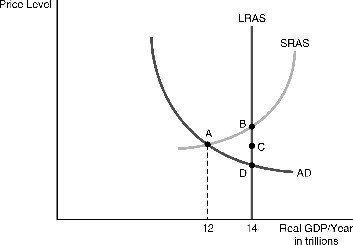Labor unions benefit their members by
A) distributing income more equally among workers.
B) helping them compete more effectively against employers.
C) increasing the number of job opportunities available for employees.
D) preventing or controlling competition among workers.
E) promoting the trade they represent to assure an adequate supply of skilled workers.
D
You might also like to view...
The exchange efficiency condition holds:
A. if every pair of individuals has inverse marginal rates of substitution for every pair of goods. B. if every pair of individuals shares the same marginal rate of substitution for every pair of goods. C. if every pair of individuals consumes the same quantities of every pair of goods. D. if every pair of individuals have the same level of utility.
Between the 1880s and 1920, women composed roughly ____ of the workforce
a. 1–2% b. 5–10% c. 15–20% d. 30–40%
The percentage of total national income spent on health care in the United States has
A) declined rapidly since 1965. B) remained below the level of inflation. C) risen steadily since 1965. D) remained constant over the last few years.
 Refer to the above figure. Suppose the economy is operating at point A. There is a recessionary gap of ________, which can be closed by ________.
Refer to the above figure. Suppose the economy is operating at point A. There is a recessionary gap of ________, which can be closed by ________.
A. $2 trillion; expansionary fiscal policy that generates another $2 trillion in total spending B. $3 trillion; increasing government spending by $1 trillion C. $2 trillion; an increase in government spending of $14 trillion D. $1 trillion; expansionary fiscal policy that shifts the short-run aggregate supply curve through point C